Although WordPress is the most widely used CMS worldwide, using WordPress alone won’t increase your traffic rank on Google since SEO has undergone significant changes in the past ten years.
People are constantly looking for WordPress SEO tips to make their websites more responsive to search engines and to improve their Google ranking.
So, in this article, we have compiled a list of effective WordPress SEO tips to help optimize your website and improve its ranking.
- Why Is SEO Important For WordPress?
- 15 Best WordPress SEO Tips To Keep In Mind
- 1. Select a trusted host
- 2. Check the visibility settings in search engines
- 3. Install a comprehensive SEO plugin
- 4. Create permalinks
- 5. Manually approve all blog comments
- 6. Use an SEO-friendly theme
- 7. Create a sitemap
- 8. Utilize external links with nofollow
- 9. Categories and tags
- 10. Produce high-quality, SEO-friendly content
- 11. Link internally to relevant articles
- 12. Conduct thorough keyword research
- 13. Create engaging meta descriptions
- 14. Set a URL slug that works for SEO
- 15. Use image alt text
- Frequently Asked Questions
- Is WordPress Still the Best for SEO?
- Why is SEO Dying?
- Wrapping Up
Why Is SEO Important For WordPress?
For most websites, search engines are frequently the main traffic source.
To comprehend and rank sites correctly in search results, Search engines such as google use sophisticated algorithms.
These algorithms aren’t flawless, so you’ll still need to explain what your content refers to them.
The ability of search engines to rank your content depends on its optimization.
You’ll lose out on all that traffic since your website won’t appear on search results pages when people look for the subjects you write about.
Making your website search engine friendly is crucial if you want to increase the number of visitors from searches.
15 Best WordPress SEO Tips To Keep In Mind
WordPress SEO and organic search are the foundations of many bootstrapped businesses and blogs.
This hints that search engine optimization is still relevant even though it may be difficult.
These WordPress SEO tips will undoubtedly help you crush your competitors and dramatically increase your website’s traffic.
While you can outsource to an SEO agency, applying these tricks yourself will assist you in comprehending the intricacies of the SERP.
There is a lot to discuss, so let’s get started.
1. Select a trusted host
Naturally, Google and you both want visitors to visit your website, have a positive user experience, and be able to browse and distribute your content with ease.
It will also give websites with all of these checkmarks greater ranks.
You must choose a hosting service with fast speeds since your website’s performance or load time is critical to ensuring you deliver a pleasant user experience.
You can always switch to a different web hosting provider if you already use one and aren’t quite satisfied.
Most trustworthy hosting companies will be pleased to assist you with moving your website from a rival.
2. Check the visibility settings in search engines
WordPress has a built-in feature that allows you to block search engines from seeing your website.
This option offers you time to focus on your website until it’s ready to be discovered by the general audience.
However, occasionally this option may be inadvertently selected, rendering your website invisible to search engines.
Making sure this option is disabled is the first thing you should do if your website isn’t appearing in search results.
Open the Settings > Reading section by logging in to the WordPress admin dashboard.
Ensure the box next to “Discourage search engines from indexing this site” is disabled in the “Search Engine Visibility” area by scrolling down.

After you’ve made the changes, don’t forget to click the “Save Changes” button to save your new settings.
3. Install a comprehensive SEO plugin
By adding functions that aren’t included by default in the software, WordPress plugins improve the performance of your website.
There are many plugins you can choose from, many of which will help you boost your SEO.
If you need help determining which plugin to use on your website, you can browse the WordPress plugin repository for solutions that suit your requirements.
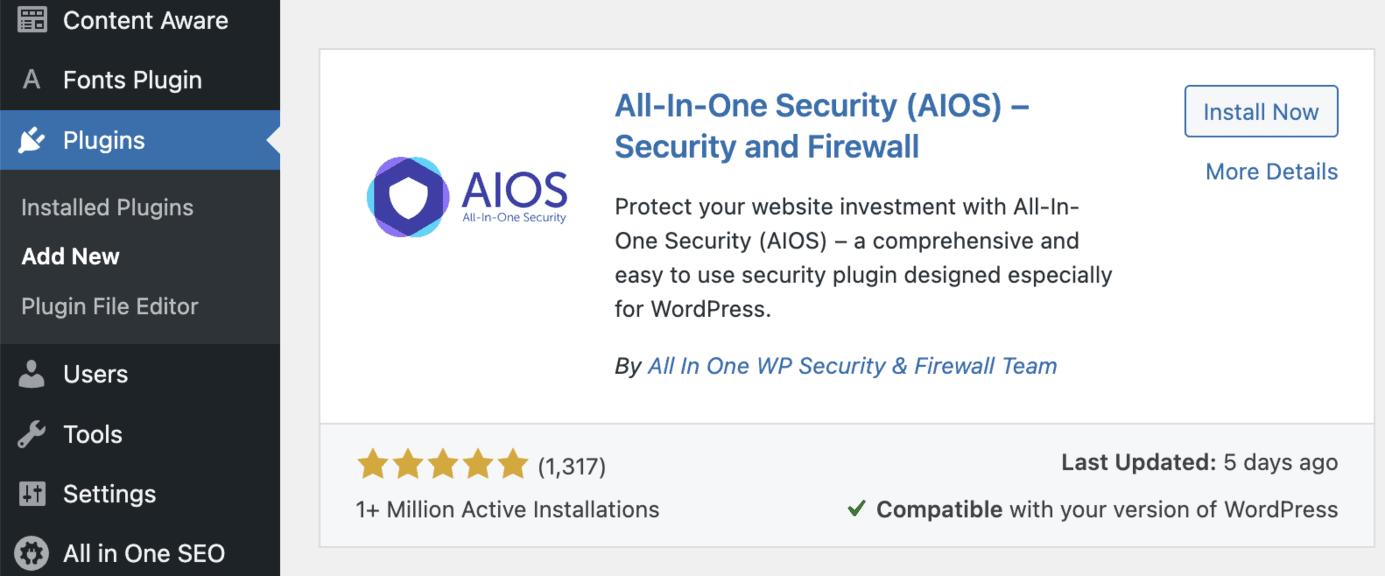
With the aid of SEO plugins like Yoast SEO, SmartCrawl Pro, and All In One SEO Pack, you can create XML sitemaps, deploy tags and categories, employ keyphrases and keywords to improve your titles and content, manage your site’s footprints and benefit from Google Analytics support.
Then, you can easily download and install the WordPress plugin of your choice to enhance your SEO immediately.
4. Create permalinks
A permalink is an ongoing URL or link to a certain blog post, page, or another area of your website. It’s one of the best SEO practices.
They serve as the fundamental format for the URLs of your pages and articles.
The “post name” option is typically the most SEO-friendly because it clearly clarifies what the page is about and keeps URLs short, which can assist in reducing truncation in search results.
Permalinks make it clear in the URL itself what your article, page, or blog is so that people know what they’ll be clicking on.
Change your permalinks to enhance user experience as well as SEO because permalinks are what search engines use to assess whether or not your site includes the answers to particular search queries.
Go to your WordPress dashboard, choose “Settings,” then “Permalinks,” to edit your permalinks so that they accurately describe your content.
When you’ve finished, click “Save Changes.”
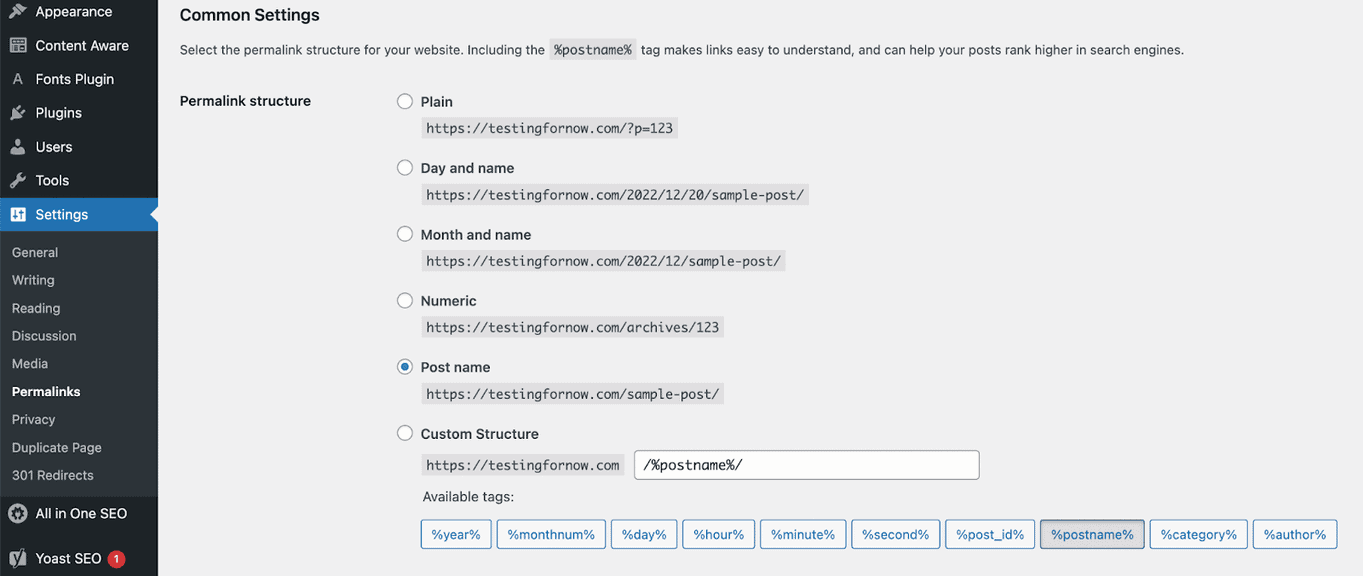
Be mindful of potential problems, particularly 404 (Page Not Found) errors, if you’re modifying the permalink structure on an existing website.
Use redirects for all previous URLs if you want to prevent these.
5. Manually approve all blog comments
Comments strongly determine a website’s user engagement.
More backlinks, traffic, and higher SEO all result from actively participating users.

You must be careful that your comments are genuine and free of spam.
Spammers provide negative links in their comments, which could harm or even destroy your search rankings.
Because of this, you must ensure you are only obtaining genuine feedback from real people.
There are WordPress plugins available, like All In One WordPress Security & Firewall and Spam Protection, and Firewall by CleanTalk, that will help prevent spam comments as well as other types of spam, such as misleading form submissions, purchases, subscriptions, and more.
Many of these plugins also come with capabilities that entirely block the known spammers, preventing them from ever seeing your site again.
Alternatively, if you’d like to prevent spam on your website, you can review each comment.
The Discussion Settings feature of WordPress makes this simple to implement.
To enable manual comment verification, navigate to Dashboard > Settings > Discussions from the WordPress dashboard.
Scroll down and click Save Changes after checking the box next to Comments must be manually approved.
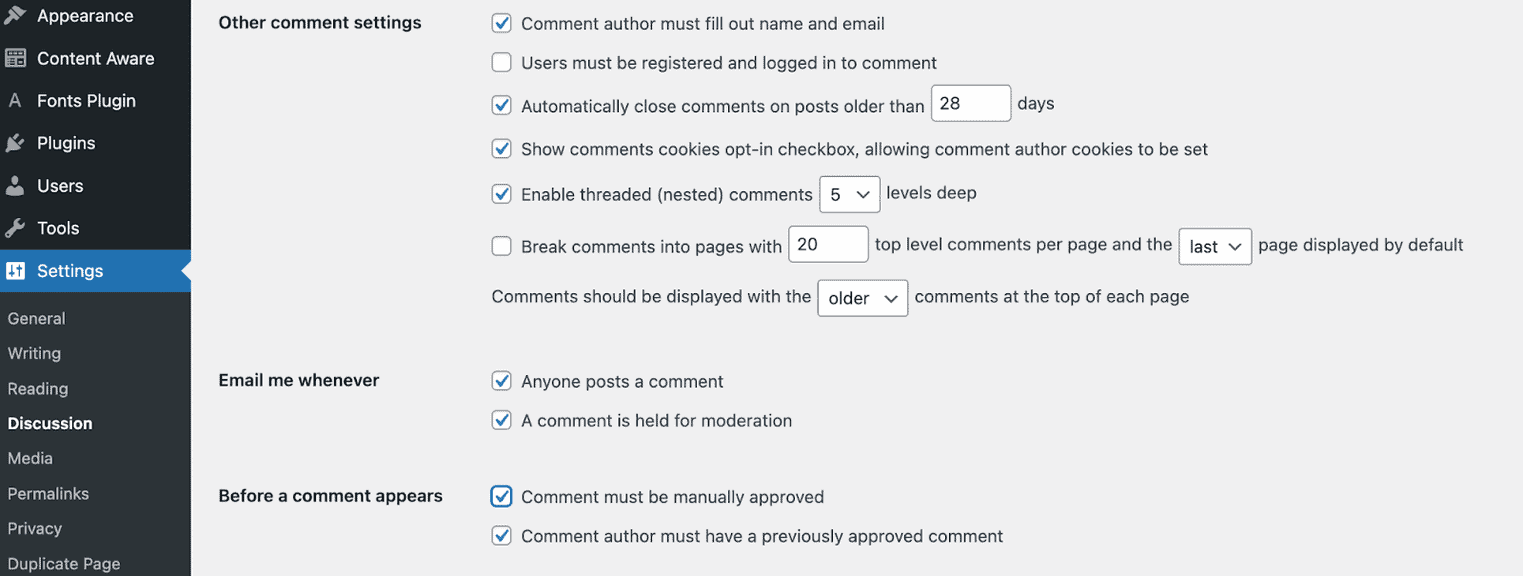
The following are the important factors to think about when filtering comments:
- Username: A username is used as the anchor text for the user’s website’s URL. Do not permit comments with usernames made up of arbitrary letters and numbers.
- Site links: Remove all comments—including those that aren’t spam—that contain hyperlinks to other websites.
- Content: Read over every comment to ensure it is clear and adds value to the article or page.
6. Use an SEO-friendly theme
Anybody—and by anyone, I mean anyone—can create a professional website quickly and easily, thanks to WordPress themes.
There isn’t much to stress about because almost all WordPress themes nowadays are fluid and mobile-friendly.
When selecting a theme, performance is what you should truly look at. With SEO in mind, you should pick WordPress themes built from the ground up.
It will take longer for your website to load if the theme is overstuffed with extra code and functionality.
This is unfortunate because page speed has been a ranking criterion for Google for more than ten years.
First of all, the option you choose should use good, legitimate HTML.
You’re likely to run into issues with your design and WordPress SEO if your theme’s framework is disorganized. Find themes that make use of the canonical URL meta tag.
This is a fancy name for a certain kind of meta tag that maintains the primary URL of your page.
The canonical URL meta element will preserve your domain name if it’s your webpage. The tag will save the post’s URL if it’s an article.
Additionally, the theme must support the proper use of title tags and heading tags (h1, h2, h3…h6).
Therefore, it is important to read the description of a theme to determine what is covered.
The ideal option for you might not be one with many features you won’t utilize.
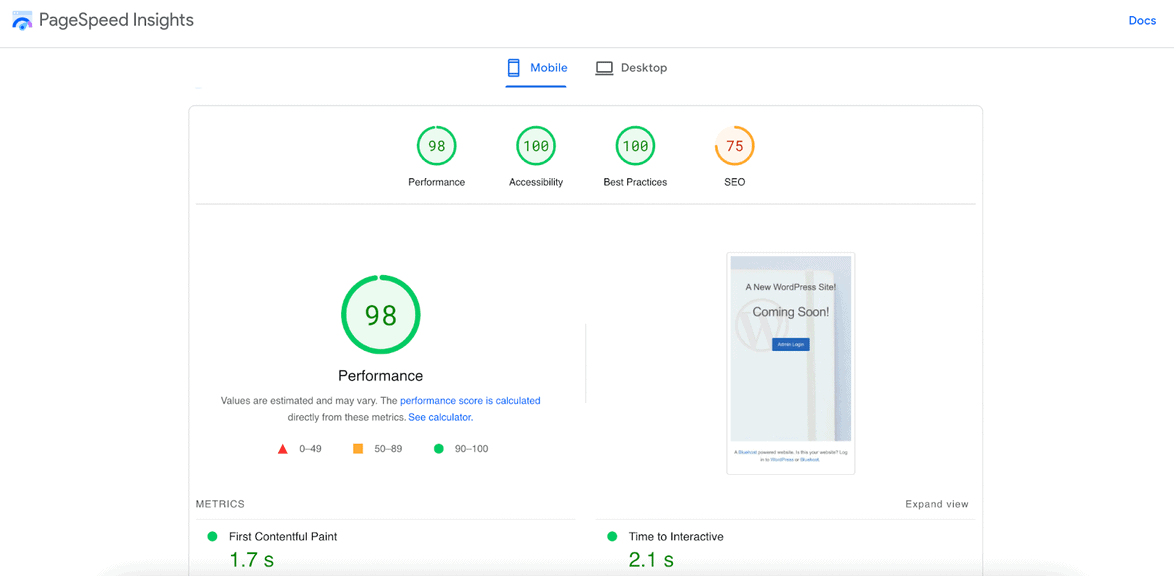
For a more accurate assessment of its performance, you can also execute the theme test through PageSpeed Insights.
7. Create a sitemap
An XML Sitemap is a specifically designed file that contains a list of every page on your website.
This makes it simple for search engines to discover all of your material.
A sitemap submission will assist search engines in including correct and up-to-date information on SERPs, even though search engines proactively index websites.
Although including an XML sitemap does not improve your website’s search rankings, it does aid in the quick discovery of the pages by search engines, which helps them begin ranking them.
WordPress sitemaps come in two forms: XML and HTML.
You ought to submit the XML sitemap to the search engines.
Crawlers can more easily find certain content thanks to this site structure information, demonstrating the significance of the pages and their connections.
Installing an SEO plugin, like Yoast SEO, or a plugin specifically designed for building sitemaps, like Google XML Sitemaps, that generates your sitemaps for you automatically, is the easiest alternative unless you have substantial coding skills and wish to develop your XML sitemap manually.
8. Utilize external links with nofollow
By creating internal links on your website, you give yourself credibility.
You are also giving such websites authority or “link juice” when you externally link to your sources or other stuff you think your viewers should read or experience.
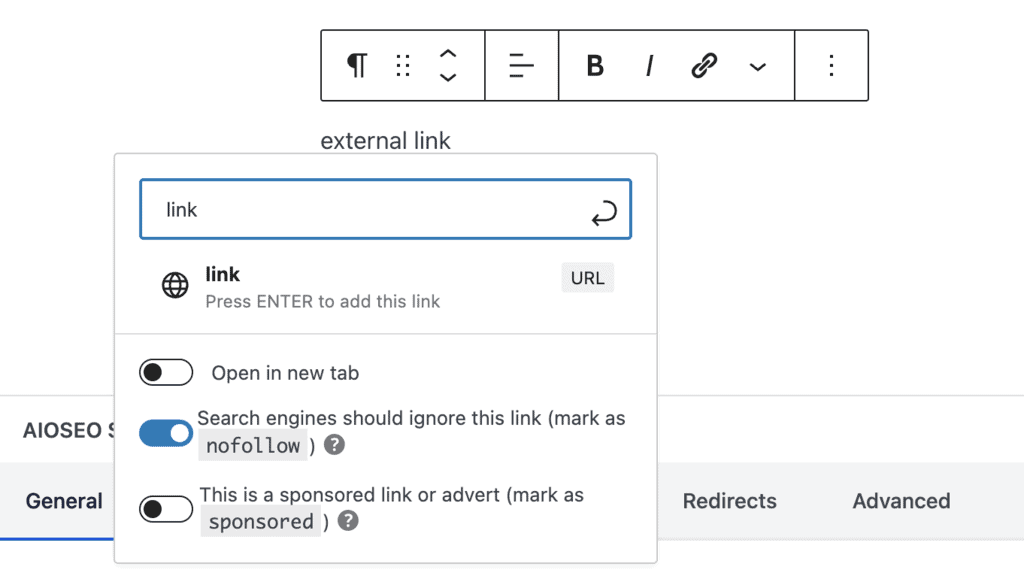
Therefore, external linking is advantageous for your SEO and the web pages you link to on your website.
This is where Nofollow external links come in handy.
By allowing nofollow external links, you not only stop content spam on your WordPress website but also stop search engines from following those URLs to the web pages you are referring to, boosting just the authority and performance of your website.
When creating a hyperlink to one of your phrases or keywords, you can either manually add a Nofollow hyperlink to your WordPress website or just enter “nofollow” in the form field.
Your website’s pages and blog articles can be divided into narrow and broad groupings using tags and categories, respectively.
This boosts your SEO because it enables search engines to comprehend your website’s framework and actual information.
By enabling users to discover the content quickly they’re looking for and by making it simpler for you to oversee your online content, tags and categories help enhance user experience.
Tags are akin to keywords that you could employ to characterize the subject of a certain page or post.
Consider your vegan food website as an example. One of your pages could include the words “vegan,” “vegan food,” or “vegan meal prep” in its tags.
Visit your WordPress dashboard and select Posts > Tags to view your existing tags or add new ones.
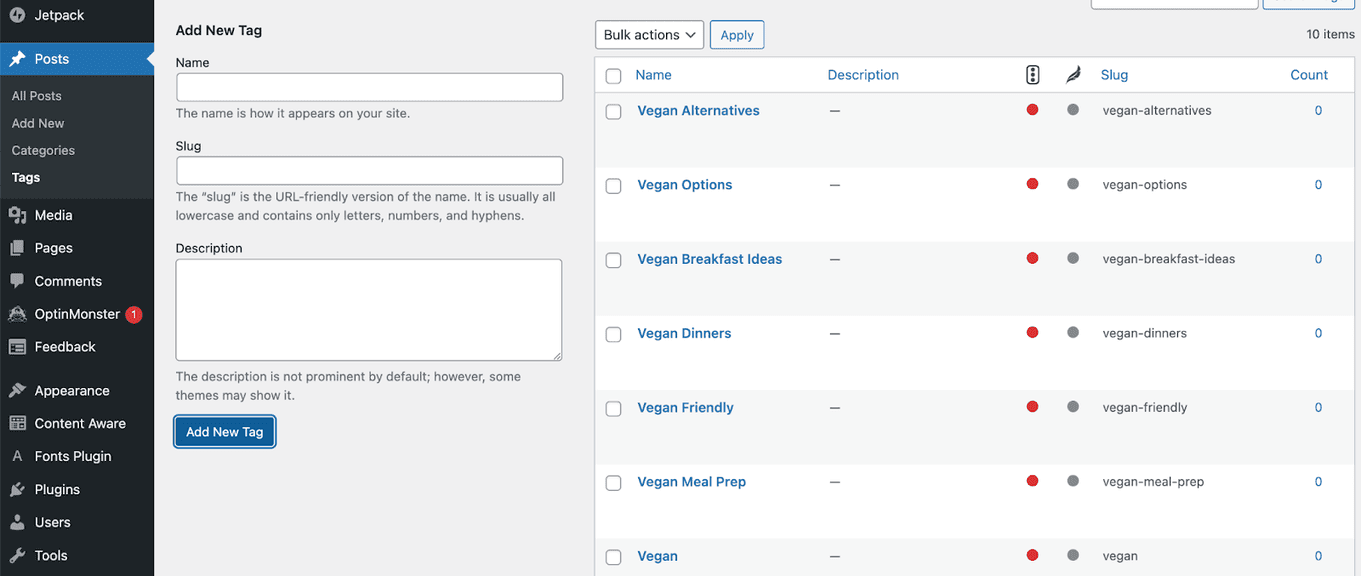
You can organize your articles and pages, in general, using tags.
Your categories could include “Vegan,” “Vegan Food,” and “Vegan Food Ideas” in the instance of the vegan food website.
Visit Posts > Categories in your WordPress dashboard to add and edit categories.
On the right-hand side of the screen is a list of every category currently in use.
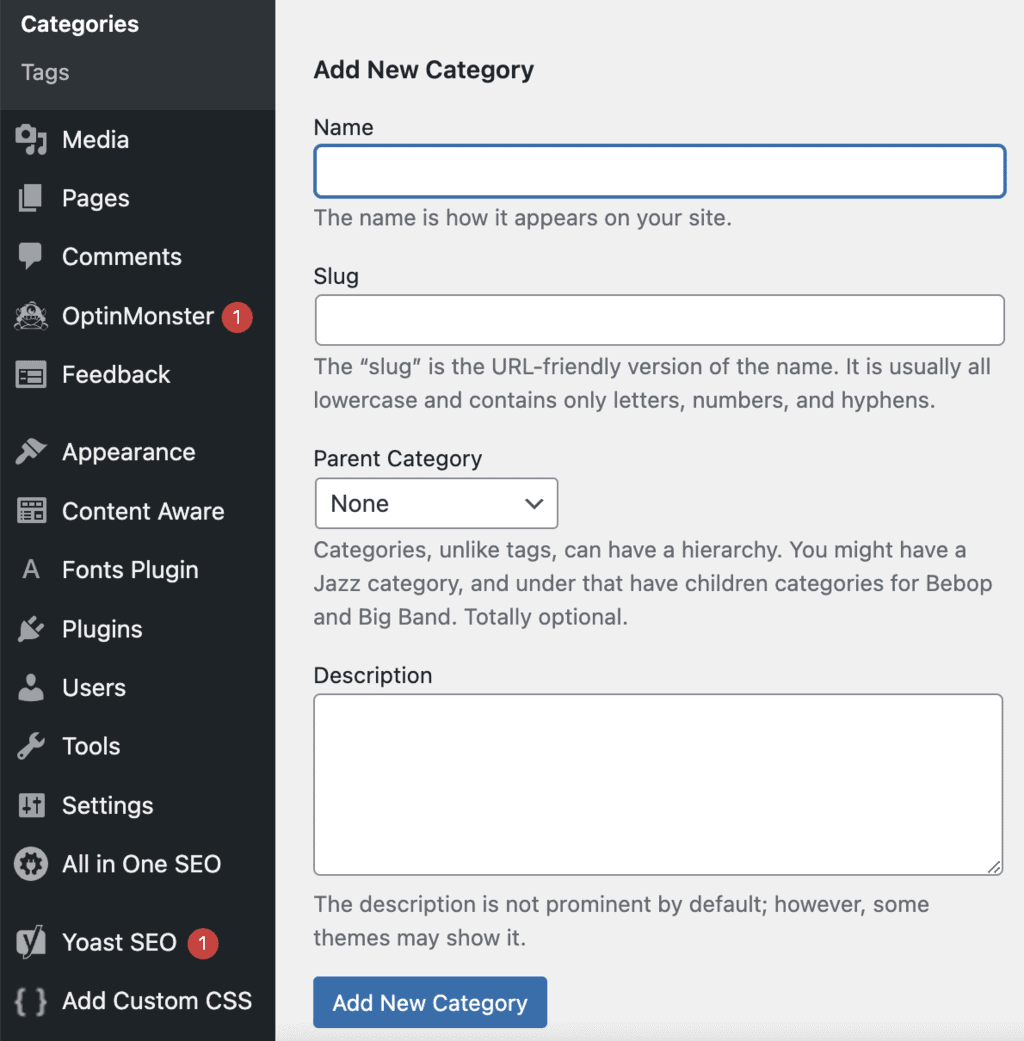
Put information in the Title, Slug, and Descriptions areas to add a new category.
For a more well-organized website structure, if it’s a subcategory, give it a parent category. Choose Add New Category to save the updates.
10. Produce high-quality, SEO-friendly content
An authoritative website ranks higher on Google with high-quality, SEO-friendly content.
When writing blog posts or other content, make sure they are:
- Thorough and well-researched: Each piece of content should thoroughly and properly address a particular search intent.
- Consistent publishing: Regularly publish fresh and updated content. Websites that regularly post new content are more likely to attract repeat visitors.
- Authentic: Create content that is original and gives readers something special.
- Well-structured: Your text can be divided into sections using headings.
- Length optimization: The content determines how long a post should be. Content optimization techniques often offer a suggested word count based on the topic and articles already out there.
- Readability: Use straightforward language and short paragraphs to make your writing more readable.
Additionally, incorporate a particular target emphasis keyword into each content you publish.
You would have a better idea of how to develop the content and promote it for a certain keyword in this manner.
Avoid keyword stuffing, a technique that devalues a piece of content by cramming it with too many keywords.
To enhance the quality of your content, use additional programs like Grammarly and Hemingway Editor.
You can get their assistance with proofreading and editing.
Use plugins like Semrush SEO Writing Assistant if you need guidance creating SEO-friendly content.
This could assess your work’s readability, keyword compatibility, authenticity, and tone.
11. Link internally to relevant articles
You must raise your website’s authority if you want to improve SEO.
The quantity of internal links you have to your web pages, articles, blogs, and other content is one of the key factors search engines use to establish your website’s authority.
They are crucial for SEO since they retain visitors, increase the “authority” of other material on your site, and enable the content to rank higher.
Simply select the text you wish to serve as the anchor, click “Insert/edit link,” and then enter the web address of a different webpage or blog entry on your website.
12. Conduct thorough keyword research
Users typically use search engines to type queries to find content online.
As a result, conducting a thorough keyword analysis is the first step in selecting the appropriate keywords for your article.
From an SEO standpoint, choosing the right focus keyword will increase your chances of ranking on SERPs.
Evaluating search intent, or what people are trying to do with their search, is the first step in doing thorough keyword research.
Choosing the right content for a keyword is easier when you know the search intent.
Finding the proper keyword is the next step after determining the search intent.
Use keyword research software, such as Ubersuggest or Ahrefs, to obtain data on relevant term search volumes, regional interest, trends, and how challenging it is to rank for the targeted keyword.
13. Create engaging meta descriptions
Although meta descriptions don’t directly affect rankings, they can be used in the manipulation of click-through rates.
Google frequently uses them for the search result snippet.
Because of this, it’s crucial to create an engaging meta description that complements your headline and further persuades readers to click.
In other words, creating engaging meta descriptions can increase the number of times searchers click on your link.
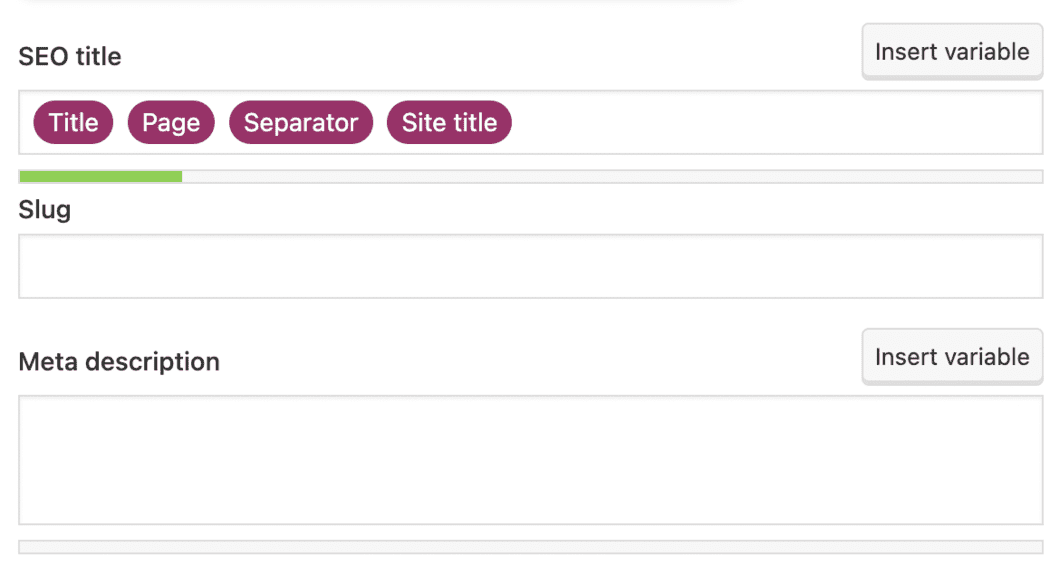
Yoast SEO allows you to write meta descriptions in the same area as title tags.
An abbreviated meta description isn’t terrible for SEO, but it doesn’t look good.
You can stay inside the recommended meta description length range using the progress meter.
To ensure you create the greatest meta descriptions, you should remember a few guidelines.
Set a goal of 120 characters and begin by giving each page a distinct meta description.
When crafting the description, naturally incorporate your targeted keyword and consider the search intent.
There must be a call to action at the end, and it must be concise and in an active voice.
14. Set a URL slug that works for SEO
WordPress, by default, makes the post’s or page’s complete title the URL.
This is rarely desirable since long URLs frequently have reduced length in search results.
A piece of advice for making search engine-friendly URLs is to keep them short because they appear better and won’t be cut off in search results.
As it aids users in rapidly understanding the page’s subject and is a minor ranking factor, be sure to include the target keyword.
Be sure to include the target keyword because it aids users in understanding the page’s subject matter and is a minor ranking factor.
Last but not least, don’t use numbers unless you are certain they won’t change.
You would have a URL that conflicts with your content if the post’s number changed in the future.
15. Use image alt text
Almost everything on a WordPress website can be optimized, even the photos. Text is less engaging than images, but images load slower.
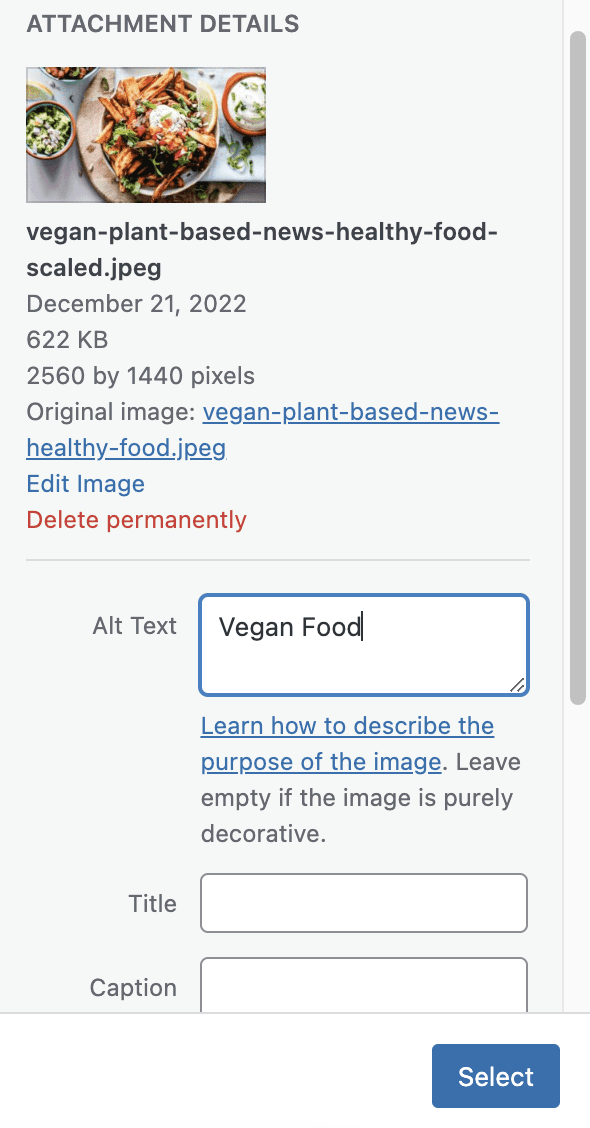
Images might slow down your website if you are unaware of their quality and size.
Use optimized images if you want your page to load quickly.
Using a meaningful title and alt tags is another method you can employ to optimize your photographs for search engines.
Search engines can better understand your image thanks to these tags.
Additionally, they benefit visually impaired users because their screen readers can interpret the alt text.
When you post an image to WordPress, you may quickly add title and alt tags.
Use Image-Alt-Text to optimize your photos.
Search engines employ Image-Alt-Text, or captions of your photos, to rank your website and assess whether or not your images include the content consumers are looking for.
Frequently Asked Questions
Is WordPress Still the Best for SEO?
WordPress sites can rank well since an SEO-optimized website offers more chances to feature in search results.
Various SEO plugins and customizations for WordPress make it feasible to improve SEO aspects.
Therefore, WordPress is great for SEO
Why is SEO Dying?
Because it remains a very effective digital marketing approach, SEO is not dead and never will be.
SEO will inevitably alter as Google modifies its algorithm, but that should be expected.
Now is a fantastic time to start if you’re considering SEO for your website
Wrapping Up
Anyone can improve WordPress SEO. You could raise the authority and rating of your website across all search engines by putting some or all of the WordPress SEO tips into practice.
You need to give yourself enough time to start seeing benefits after putting these WordPress SEO best practices into action.
Furthermore, you must always update your WordPress SEO approach to keep up with changes in the field.






